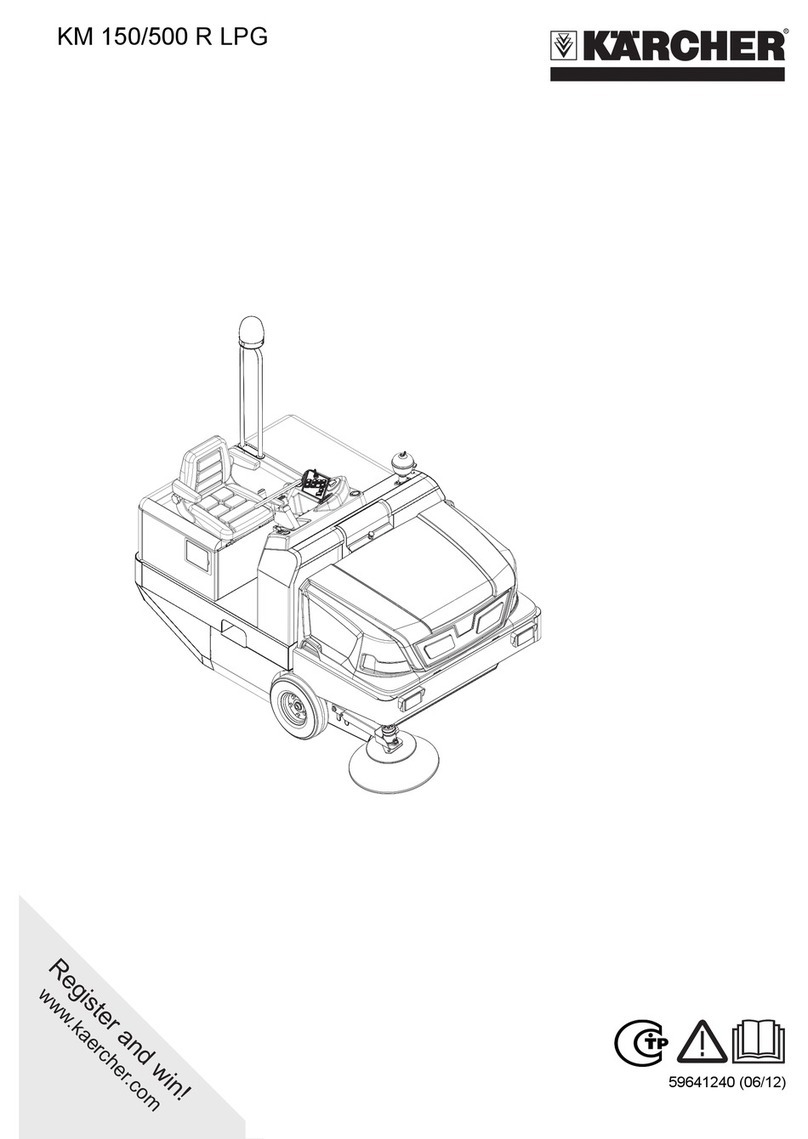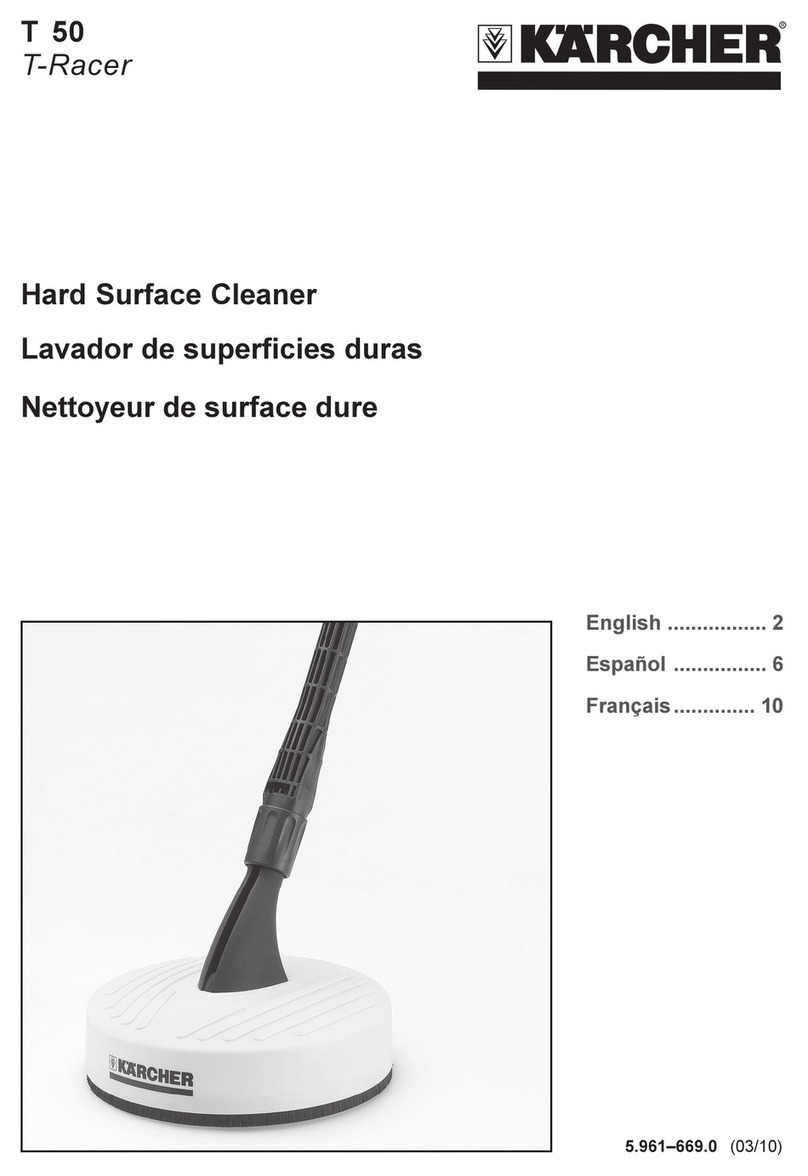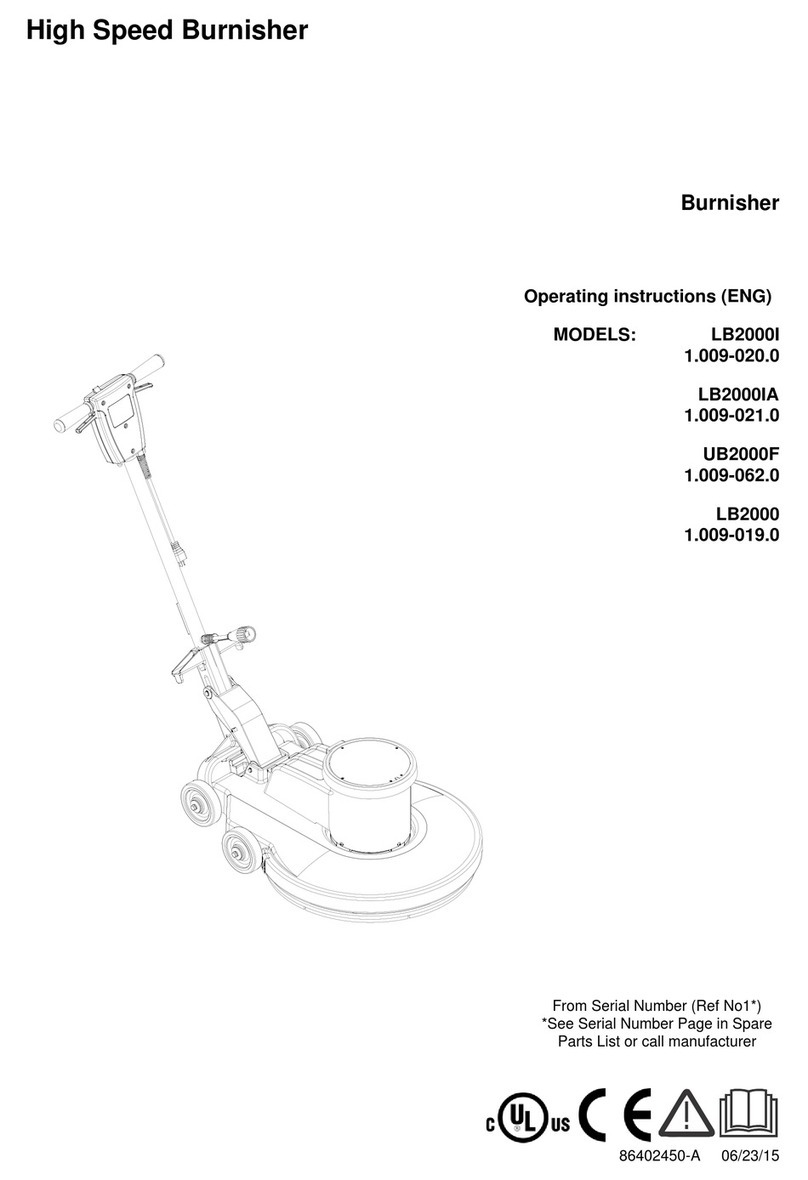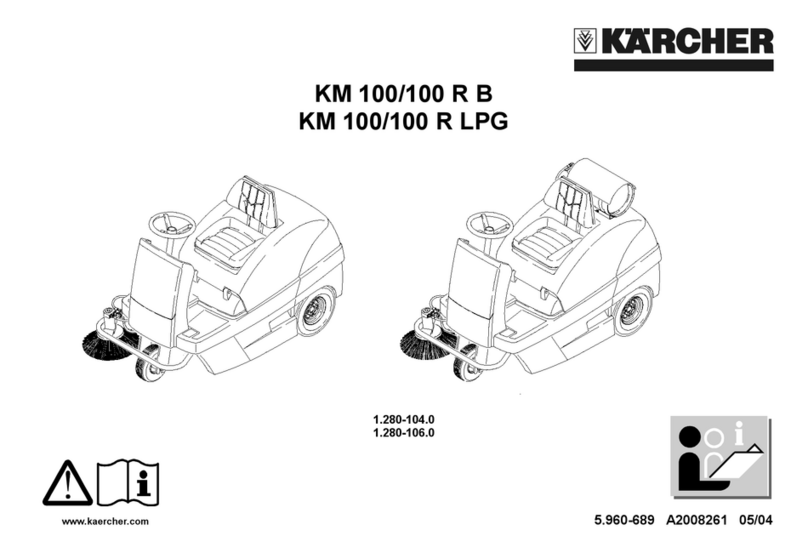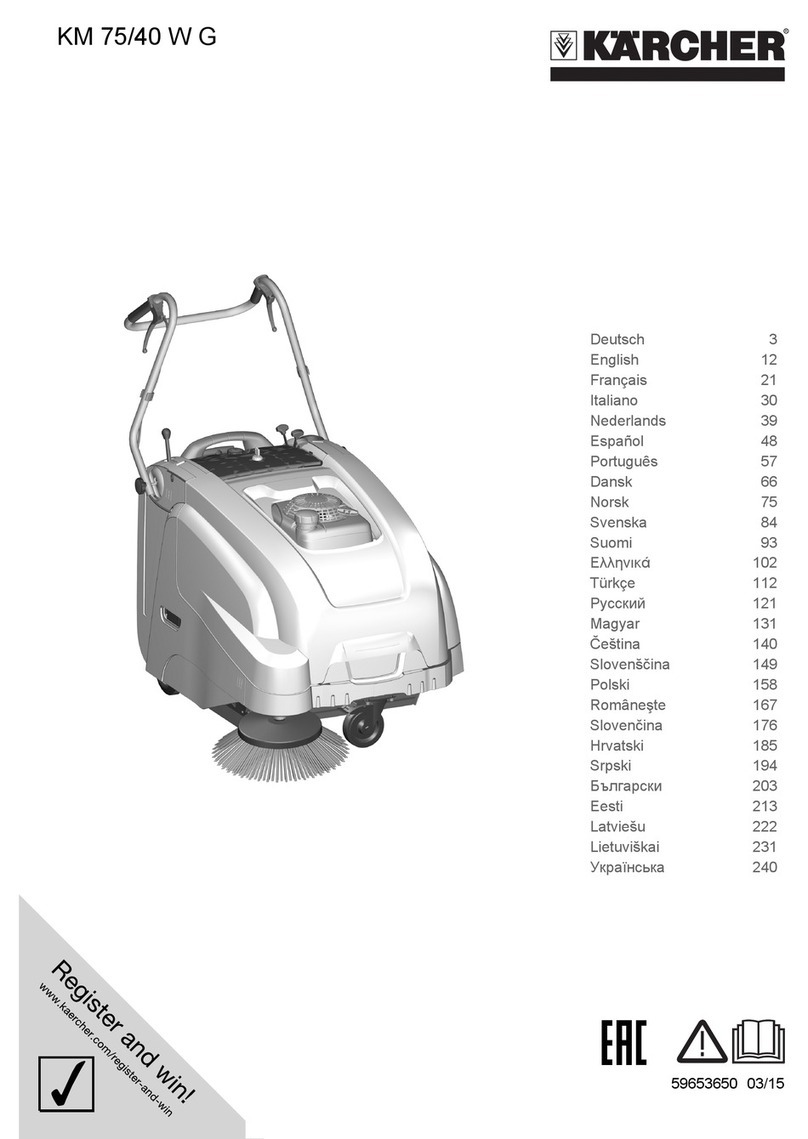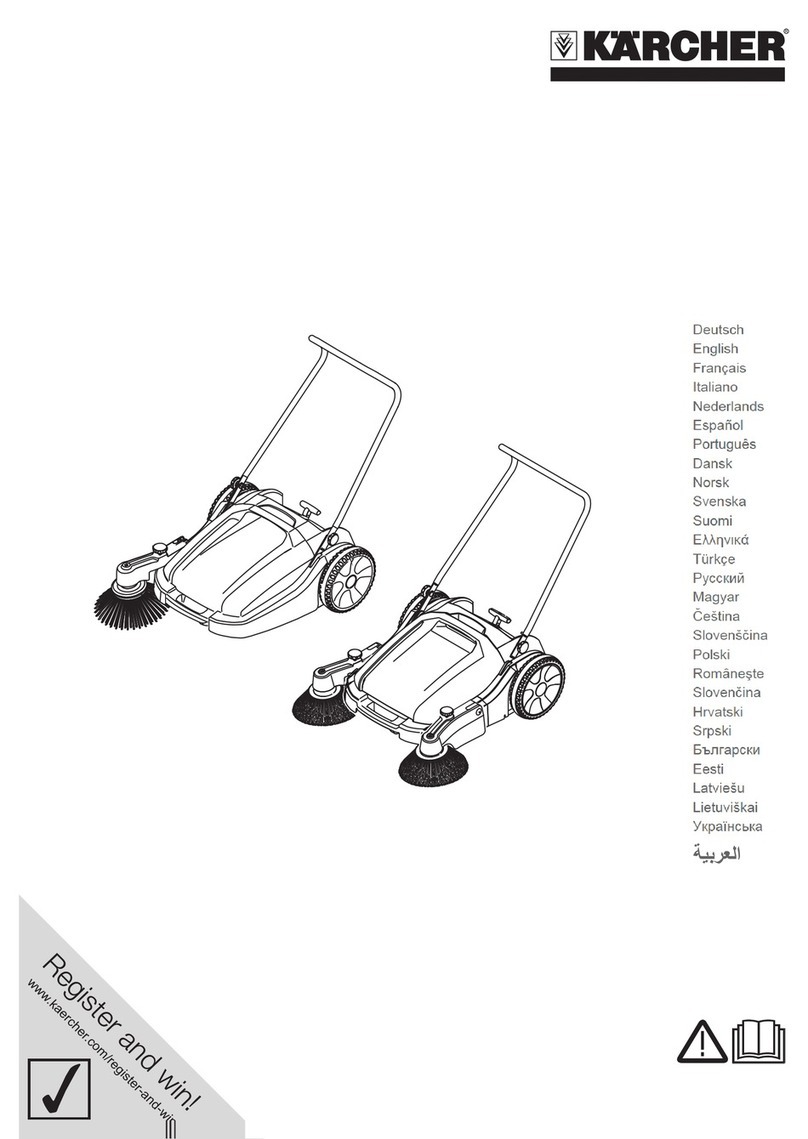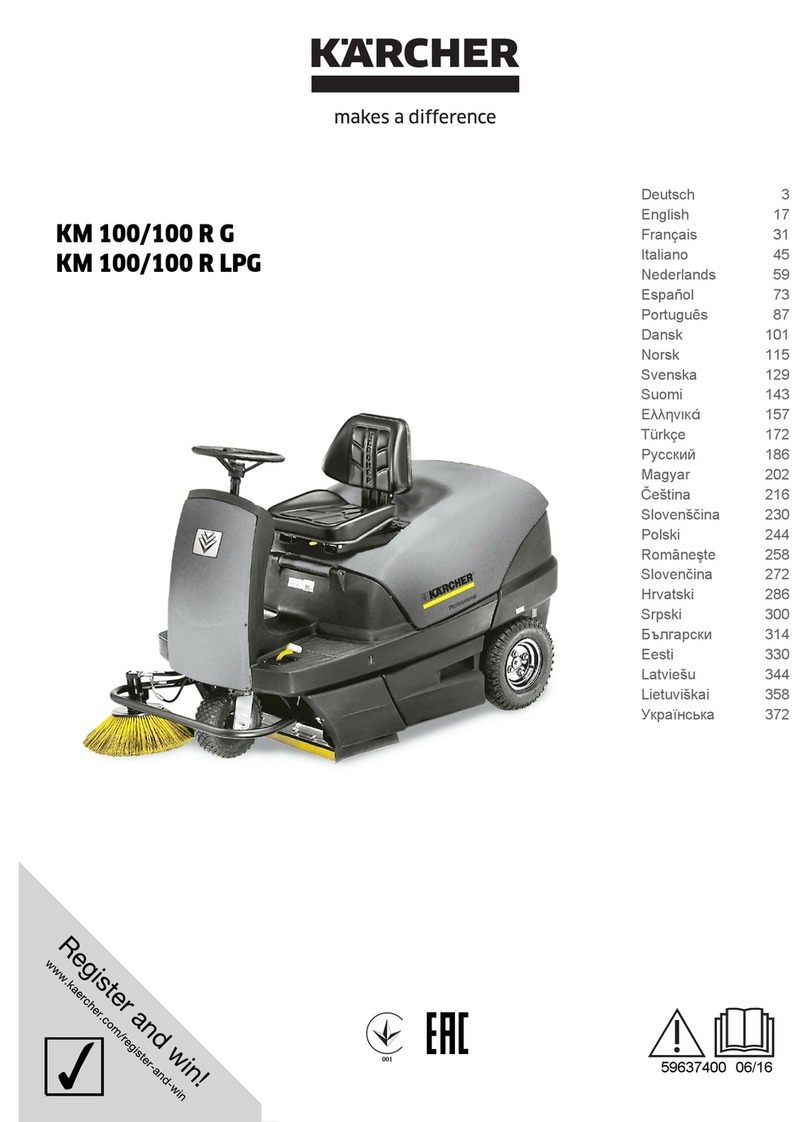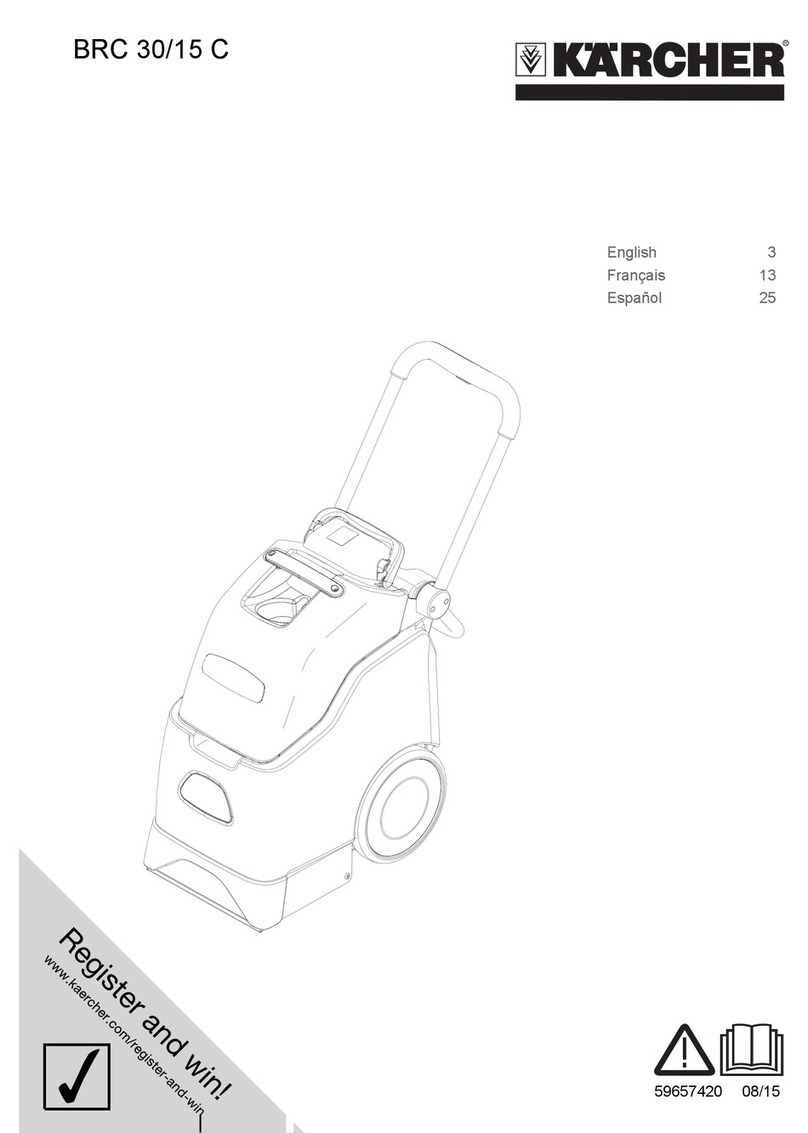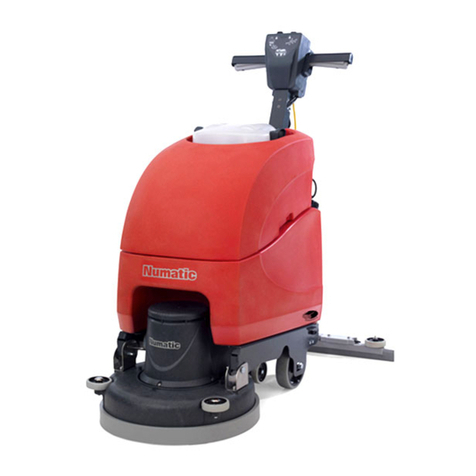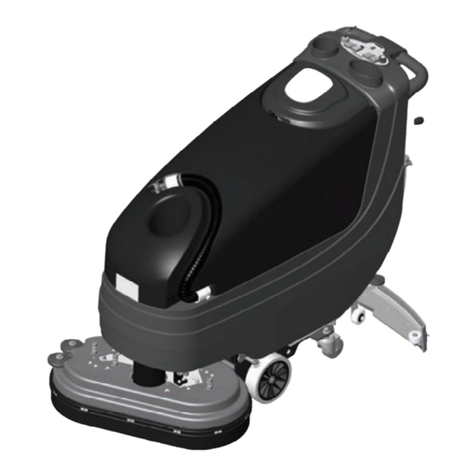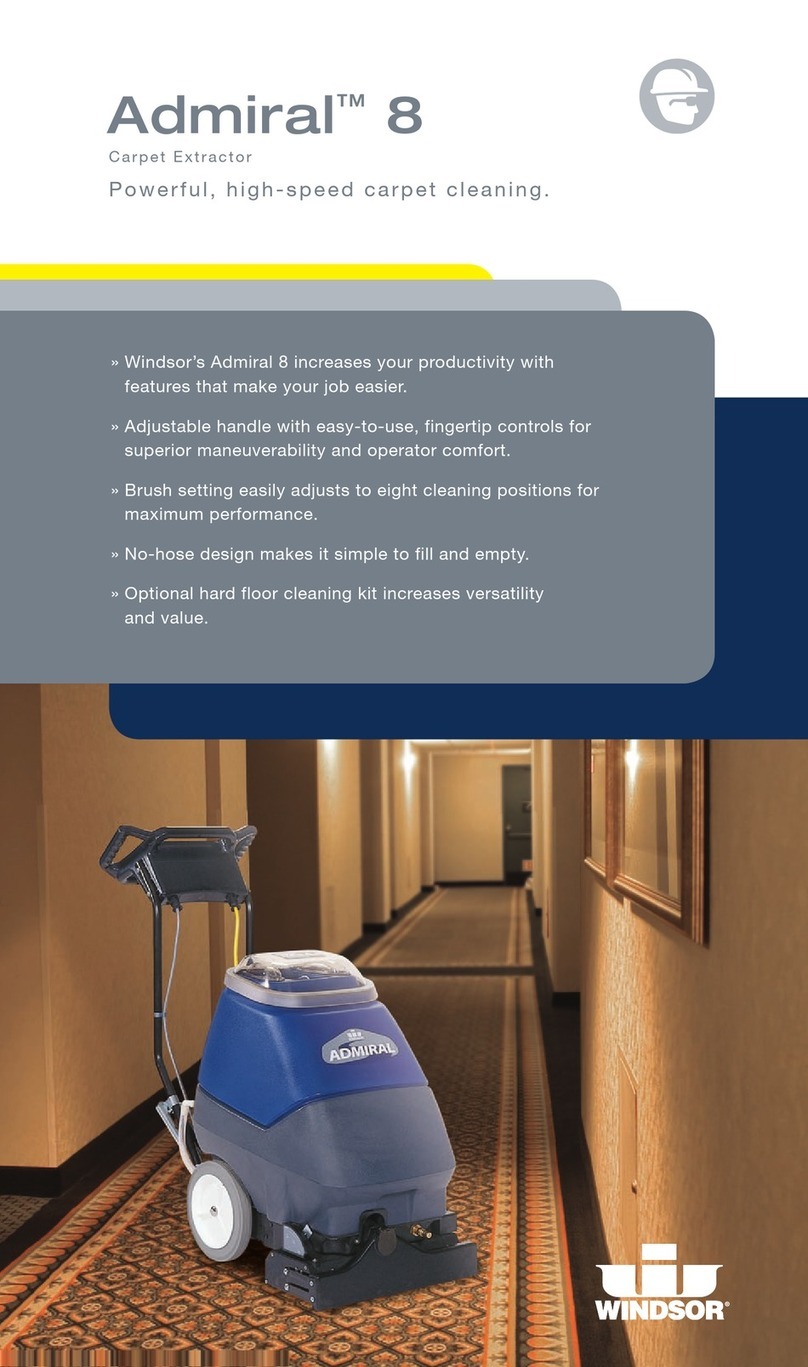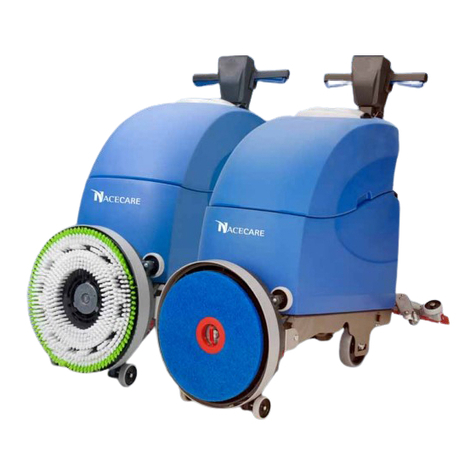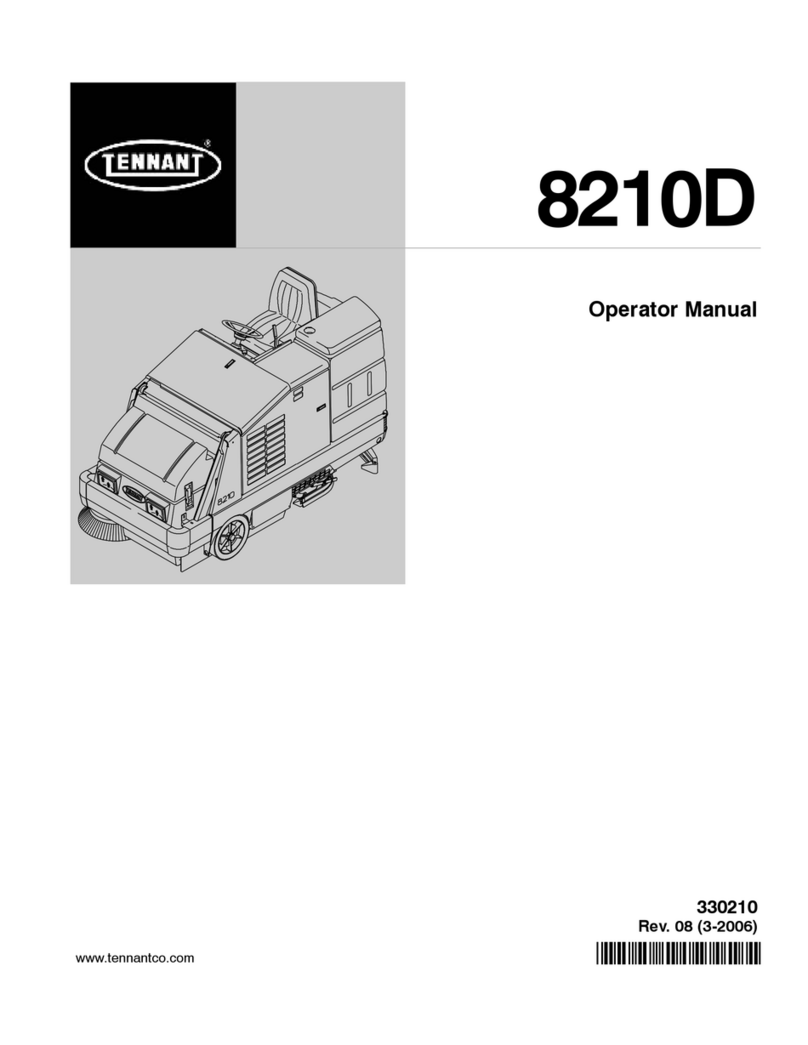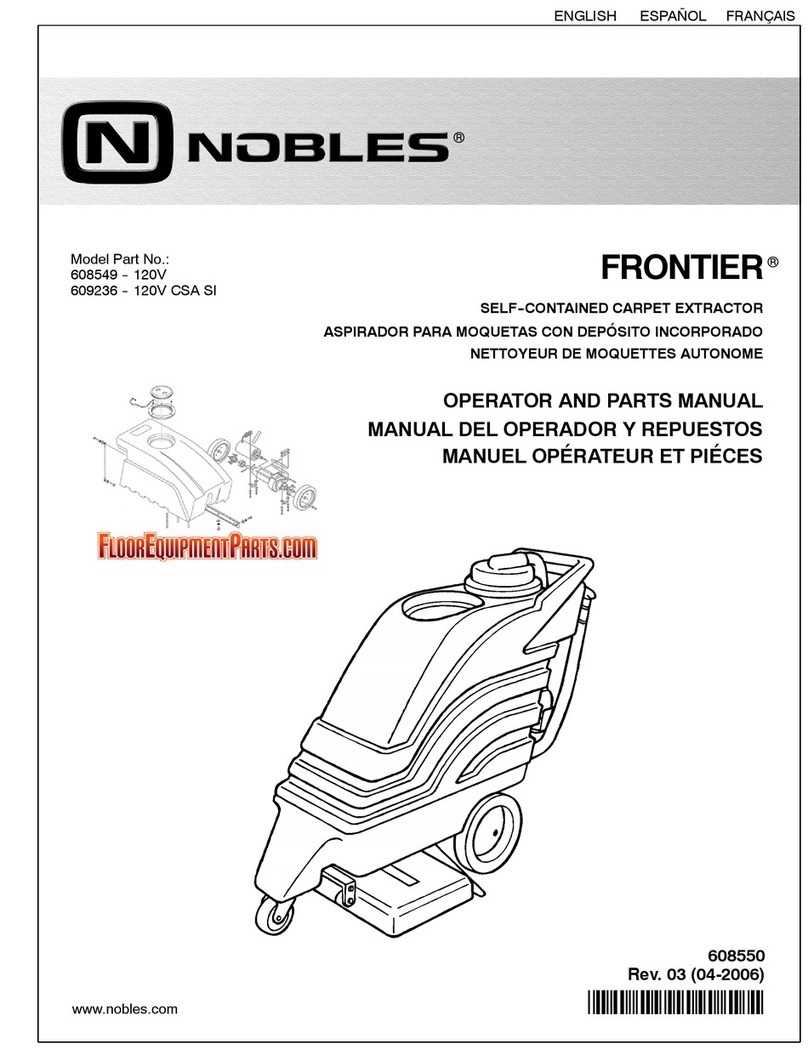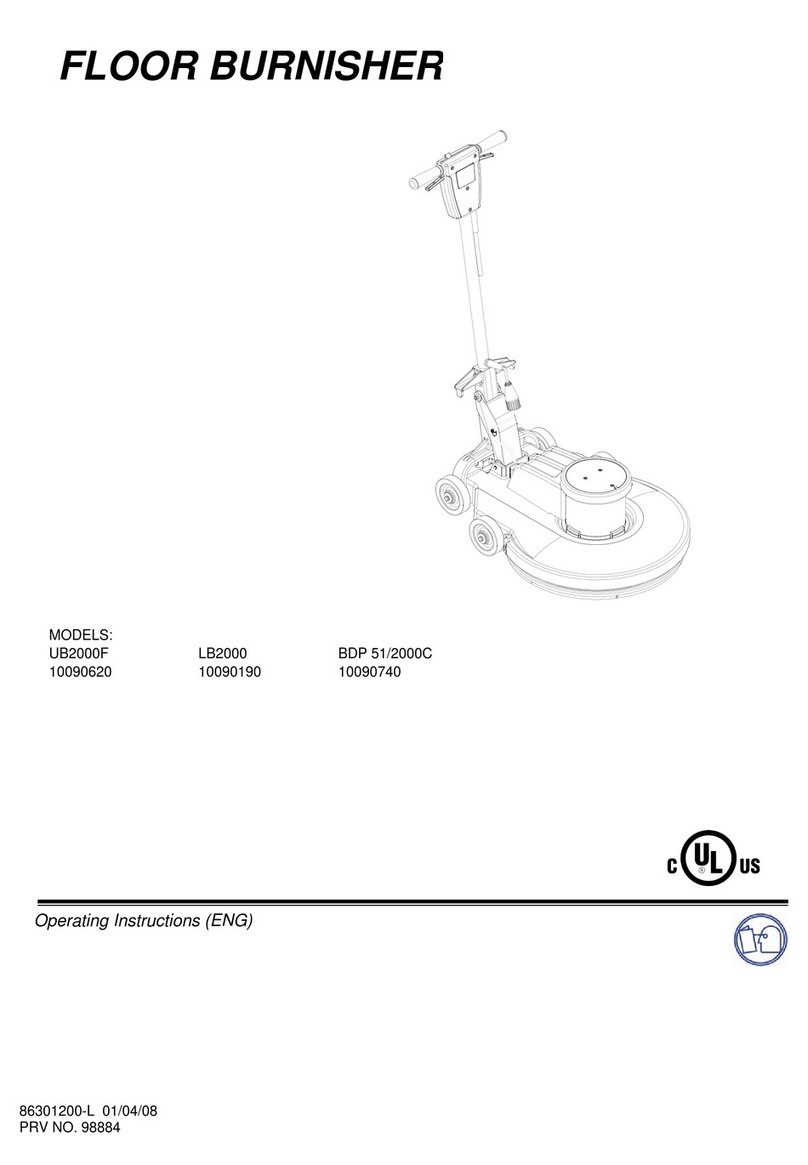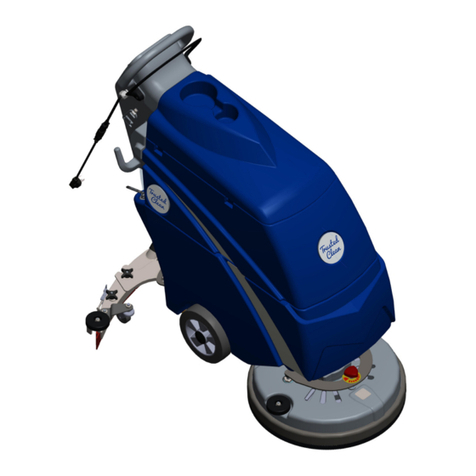9
KMR 1250 B Unit Functions
Gasoline Engine (HONDA GX 270)
Float system
When float chamber (14) is empty, fuel passes
fromfueltankintofloatchamber(14)viathefloat
valve inlet (18). The rising fuel level causes the
float (21) to be raised.
The inflow of fuel is interrupted when the float
(21)causesthefloatvalvetoclose.Drawingfuel
forengineoperationfromthefloatchamber(14)
causesthefloat(21)tobelowered,whichinturn
opens the float valve (18).
Thiscyclicalprocedureensuresaconstantlevel
of fuel inside the float chamber (14).
Float chamber equalization
On the carburetor side, the airspace inside the
float housing is connected with the outside at-
mosphere by means of a channel. This facili-
tates the equalization of the pressure equilibri-
um inside the float chamber as the fuel level ris-
es or falls.
Idling operation
Whentheengineisidling,thethrottlevalve(4)is
fully closed.
– This causes negative pressure to occur be-
tween the throttle (4) and the crown of the
engine piston, with the latter moving toward
bottom dead center while the intake valve is
open.
– The atmospheric pressure inside the float
chamber (14) then causes fuel to be con-
veyed through the main jet (15) and idle jet
(2).
– Theidlejet(2)controlstheflowoffuelthrough
the idle bypass channel (3). The fuel then
blends with the air being drawn in through
the idle air channel (6).
– The resulting air/fuel mixture then flows into
the engine.
– The idle mixture adjusting screw (16) con-
trols the volume of air/fuel mixture that is al-
lowed to flow through the idle orifice (5).
Partial load operation
Engine speed rises when the throttle valve (4)
opens, and the volume of the air/fuel mixture
being drawn through the idle jet (2) increases.
Full load operation
Infullloadoperation,thethrottleiswide(4)open:
– Air flows through the carburetor throat, or
venturi(7).Becausethediameteroftheven-
turi outlet is smaller than that of the intake,
the air is accelerated as it passes through.
This increased flow velocity causes nega-
tivepressuretooccurattheoutletsideofthe
main jet (15).
– Pressure inside the float chamber (14) is
equalizedviaanatmosphericreliefchannel.
Becauseatmosphericpressureishigherthan
thepressureinthecarburetorthroat(7),fuel
is transported from the float chamber (14),
and pressed through the main jet (15) into
the emulsion tube (12).
– The air flowing through the main air jet (10)
isblendedwiththefuelthatisflowingthrough
the orifices of the emulsion tube (12).
– This mixture is then drawn into the carbure-
tor throat (7), where it is enriched with more
air before passing into the engine.
Choke system function
Thechokevalve(9)shouldbeclosedonlywhen
startingacoldengine.Thiscausesthefollowing
to happen:
– Theclosedchoke valve (9)allows less airto
be drawn into the carburetor throat (7).
– However, the fuel volume being drawn in
through the main jet (15) remains the same.
– This causes the fuel component in the air/
fuel mixture to rise, with the richer mixture
providing easier engine starting.
Note:
For information on other maintenance and
adjustmentsoftheengine,refertotheServ-
ice manual „4-Stroke Internal Combustion
Engines“ (5.905-122).



